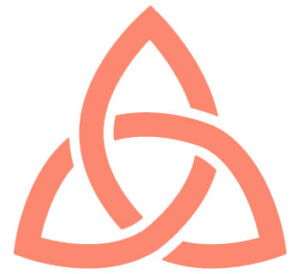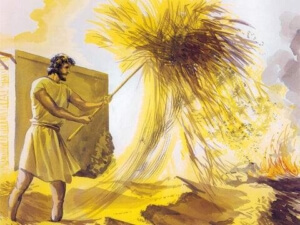By Monika Manser
Introduction
The most frequent way of praying that Saint Ignatius uses is that of imagining ourselves in a Gospel scene. We imagine ourselves as a character in the story. We take part in the story, seeing Jesus and all the other people, being aware of what’s going on and how we are feeling. The purpose of praying with the imagination is to allow Christ in the Scripture to speak to us. To bring the Gospel stories to life for us. We are not trying to recreate history. It doesn’t matter if your imagination takes the story off in a different direction to the Scripture. It doesn’t matter if the story takes place in 1st century Palestine or where we live now in the 21st century. What is important is what God wants to say to us through this passage.
Let us sit and relax so that together we can contemplate the Gospel using our imagination.
Prayer
We acknowledge we are in the presence of God so let us say together:
Direct O Lord and guide and influence all that is happening in my mind and heart during this time of prayer: all my moods and feelings, my memories and imaginings; my hopes and desires; may all be directed and influenced to your greater glory, praise and service and to my growth in your Spirit.
Amen
Let the Spirit enter our hearts and enlighten our minds so that we, in this Season of Advent can prepare for the coming of Our Lord.
Reading
Matthew 3:1-12
In due course John the Baptist appeared; he preached in the wilderness of Judaea and this was his message: “Repent, for the kingdom of heaven is close at hand.” This was the man the prophet Isaiah spoke of when he said:
A voice cries in the wilderness:
Prepare a way for the Lord,
make his paths straight”.
This man John wore a garment made of camel-hair with a leather belt round his waist, and his food was locusts and wild honey. Then Jerusalem and all Judaea and the whole Jordan district made their way to him, and as they were baptised by him in the river Jordan they confessed their sins. But when he saw a number of Pharisees and Sadducees coming for baptism he said to them, “Brood of vipers, who warned you to fly from the retribution that is coming? But if you are repentant, produce the appropriate fruit, and do not presume to tell yourselves, ‘We have Abraham for our father,’ because, I tell you, God can raise children for Abraham from these stones. Even now the axe is laid to the roots of the trees, so that any tree which fails to produce good fruit will be cut down and thrown on the fire. I baptise you in water for repentance, but the one who follows me is more powerful than I am, and I am not fit to carry his sandals; he will baptise you with the Holy Spirit and fire. His winnowing fan is in his hand; he will clear his threshing-floor and gather his wheat into the barn; but the chaff he will burn in a fire that will never go out.”
Contemplation
Today, the Gospel of the Second Sunday of Advent, does not focus on Jesus but John the Baptist. He is the last of the traditional Old Testament Prophets who preaches repentance and conversion to the people of Israel. He then goes on to baptise those who repent with water. Let us enter the scene at the River Jordan and listen to John preach about repentance.
• Who are you in the scene? Are you one of John’s disciples? Someone who has come to be baptised? Are you a Pharisee? A Sadducee? Someone in the margins of the crowd?
• Notice what is going on around you. The sounds that you hear. The smells that fill the air. Look around at those present. Notice their diversity. What expressions are on their faces as the listen to John? Are they listening intently? Do they look afraid? Surprised? Repentant? What about the Sadducees and Pharisees? How do they look? Angry? Hostile? Guilty?
• Why are you there? Do you think that this is the man the prophet Isaiah spoke of? Do you think he fits the description of the voice crying in the wilderness? Is this what attracted you to come?
• Have you come to be baptised? To turn your life around? Have you come alone or with someone?
• What is your first impression of John with his wild appearance? How do you feel as you are confronted with his call to repentance? Uncomfortable? Refreshing? Do you find John’s message clear? Do you feel you now ready to take stock and sort out your priorities in life?
• Do you think that John’s message to the Pharisees and Sadducees is also for you too? Do you find him confrontational or do you admire him for being so honest? How do you think they felt when John told them (and us) that just because they are descendants of Abraham does not mean their salvation was secure? Does John’s message make it clear to you that it is not your creed or social status that will save you but a total dependence on God?
• Does John’s message of repentance make you acknowledge that you are a sinner in need of God’s mercy? Do you wonder how you can change your ways?
• How do you feel when John tells you “ I baptise you in water for repentance, but the one who follows me is more powerful than I am, and I am not fit to carry his sandals; he will baptise you with the Holy Spirit and fire?” Excited? Hopeful? Does it fill you with expectation? An expectation that perhaps the Messiah will come in tour lifetime? A desire to change your ways now? A feeling of knowing you cant do it on your own?
Speak to Jesus about where you need conversion and change in your life. Ask him about what preparations you need to make during this season of Advent for his coming now and for the year ahead.
Sharing
Let us now share what we thought, felt etc. only if you are comfortable to do so.
End Prayer
Suscipe of St. Ignatius of Loyola
Take, Lord, and receive all my liberty,
my memory, my understanding,
and my entire will,
All I have and call my own.
You have given all to me.
To you, Lord, I return it.
Everything is yours; do with it what you will.
Give me only your love and your grace,
that is enough for me.
Scripture texts: from the Jerusalem Bible 1966 by Dartington Longman & Todd Ltd and Doubleday and Company Ltd




